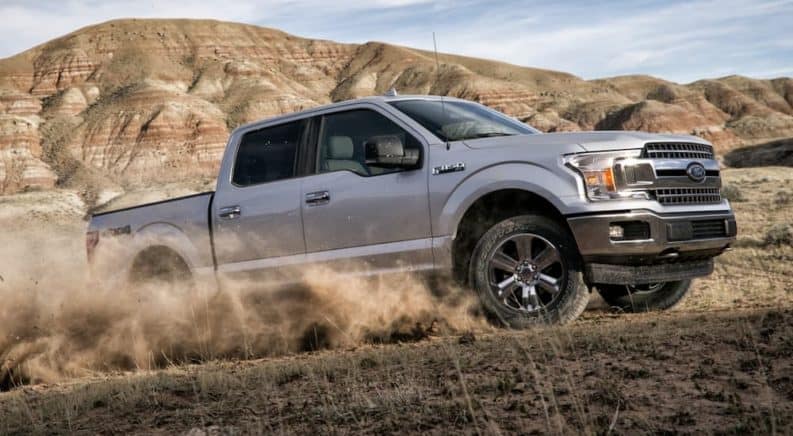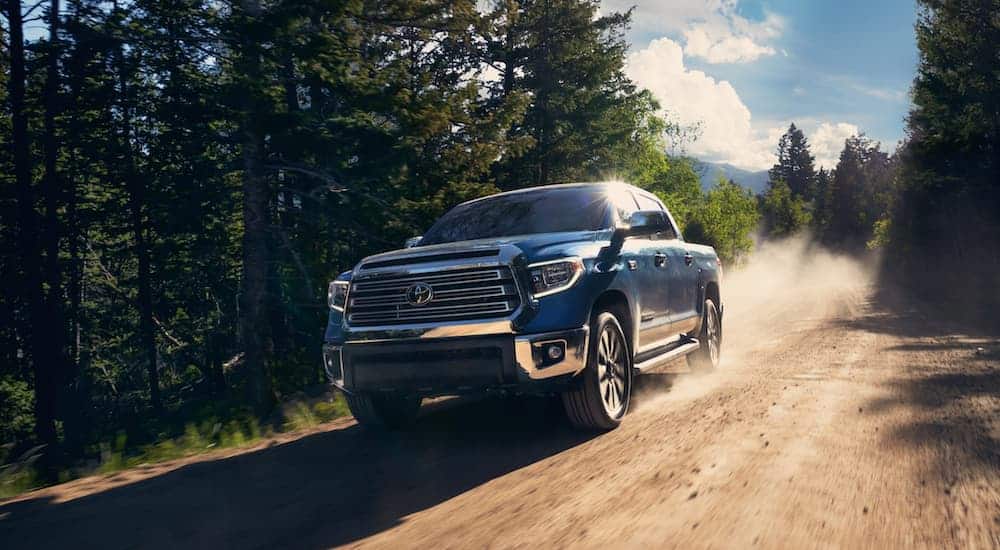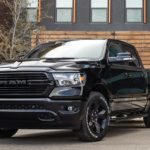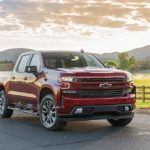This side by side battle of the 2020 Ford F-150 vs 2020 Toyota Tundra will give each pickup the fair shake they deserve. In one corner, we have the Ford F-150. A class-leading workhorse built for those who need to tow, to go off-road, and like to go on adventures.
In the other corner lurks the 2020 Toyota Tundra. The F-150’s dominance in performance has not stopped buyers’ loyalty to the now 21-year-old Toyota Tundra. The all-new Toyota Tundra conceals several driver conveniences that add to its popularity among the pickup truck community.
Comparing the V8s and Other Stats
For the 2020 model year, Toyota decided to keep it simple. The 2020 Toyota Tundra comes available with only one available engine. This engine will run on one 6-speed automatic transmission, while Ford enters the 2020 pickup segment with six available engines and two automatic transmissions, it eclipses Toyota’s single powertrain power numbers with ease.
Regardless of the trim level, or however much you pay for a 2020 Toyota Tundra, you’ll end up with a 5.7L V8 on a 6-speed automatic transmission. However, this Tundra powerhouse is nothing to scoff at. It’s a 5.7L V8 engine that will purr well enough with up to 381 horsepower and 401 lb-ft of torque. When properly equipped, this truck can tow up of 10,200 lbs and even has a payload capacity of up to 1,730 lbs.
It’s important to note that it’s uncommon for a truck to come standard with a V8 engine on the base model. Most brands offer a V8 as part of its powertrain at an extra cost or on a higher trim, and Toyota gives you that engine to start with, but you’ll undoubtedly get more power from the Ford F-150.
The 2020 Ford F-150 has a powertrain for every kind of driver. You can be a sixteen-year-old needing to get from home to school and back, an early riser who needs to load their truck bed with tools for the construction site, or someone who needs a truck that works hard until vacation time when it needs to carry a family of five to a campsite. In this way, Ford offers buyers options to prioritize power, comfort, or both.
With the 2020 Ford F-150, you’ll have six engines to choose from. The standouts are the High Output 3.5L V6 EcoBoost and a 5.0L TI-VCT V8.
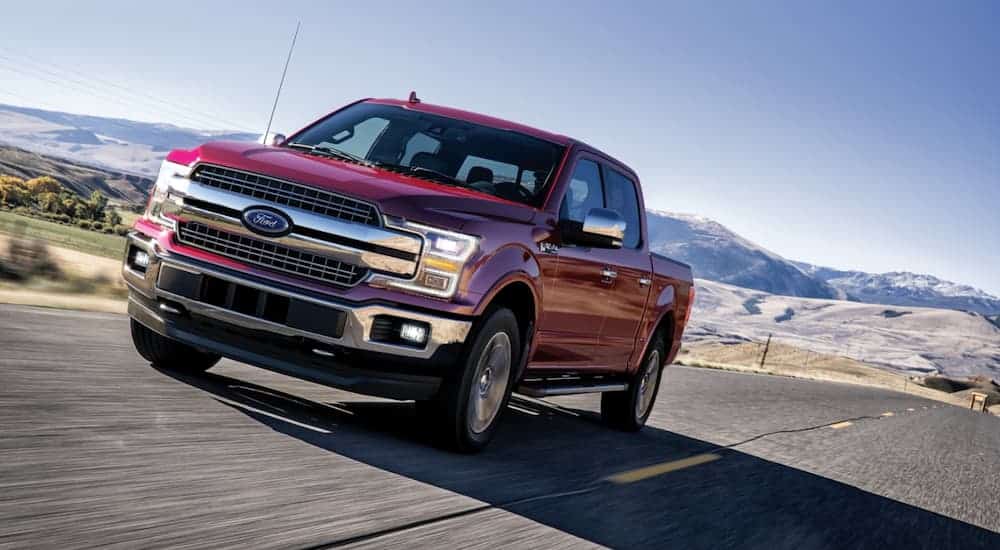
Let’s begin by the comparison that matters the most: The F-150’s V8 vs the Tundra’s V8. If the Tundra’s V8 comes standard, it should be pretty good, right? The answer is yes, but it’s not better than Ford’s.
Ford’s 5.0L TI-VCT V8 has more horsepower, but the torque is about the same. You’re going to be able to about 900 lbs more with this engine and get 1,540 more lbs of payload capacity. The Tundra’s biggest weakness is its payload capacity. Each and every one of Ford’s engines exceeds The Tundra’s payload capability.
The F-150’s 3.5L V6 engine performs well with up to 450 hp and 510 lb-ft of torque. It can tow up to 12,000 lbs and has a payload capacity of 3,000 lbs. Ford’s list of engines continues with another 3.5L EcoBoost V6. It has less horsepower and torque than the High Output version of this engine. However, it is responsible for the F-150’s best-in-class towing (13,200 lbs). Additionally, the base engine is a 3.3L V6 engine that gets up to 290 hp and 265 lb-ft of torque.
The Tundra does not come available with a diesel-powered engine. Diesel is useful for its towing capabilities, as well as its fuel-efficiency ratings. Ford offers a 3.0L Power-Stroke V6 diesel engine that boasts up to 11,400 lbs of towing capacity. It has a maximum rating of 250 hp and 440 lb-ft of torque with a payload capacity of 1,900 lbs.
Finally, Ford’s 2.7L 6-cylinder engine is the second step-up from the base 3.3L V6 engine. It meets the Tundra’s torque capacity, falls short of its towing capacity by 1,700 lbs, but has more payload capacity.
Comfort, Convenience, and Entertainment
The Ford F-150 comes available in seven trims, and the Tundra comes available in 6. The Toyota Tundra’s trims include the SR, SR5, Limited, Platinum, TRD-Pro, and the 1794. On the other hand, the F-150’s trims include the XL, XLT, Lariat, King Ranch, Raptor, Platinum, and Limited.
Both the F-150 and Tundra have an eerily similar dashboard layout. Vertical columns with air vents will lay to the left and right of a touchscreen infotainment system. Climate control buttons lay below.
As always, expect to have the more convenient features in the higher-end trims, such as the F-150 Lariat and Tundra Limited. Each car gains standard leather trim with the F-150 Lariat and Tundra Limited. For features like Apple Carplay and Android Auto, the Tundra does its competition one better and adds Amazon Alexa to its suite of standard infotainment amenities. Ford’s XLT model is the first to be equipped with Apple Carplay and Android Auto capabilities.
Each brand’s off-road-ready vehicle is the Tundra TRD-Pro Edition and the F-150 Raptor. Each boasts FOX brand, off-road shock absorbers, and 2” factory lifts.
Each off-roader has exclusive interior styling. Both feature the car’s specific trim name embroidered on the inside. The Raptor comes standard with unique cloth trim that is designed to repel spills and prevent stains. The TRD-Pro comes standard with leather trim. Depending on how often you’re bringing the outside in, either interior is suitable for an off-road machine. Additionally, leather interior is an available offering on the Raptor.
The F-150 and Tundra reach their maximum luxuriousness with the F-150 Limited and Tundra 1794. Each has heated and ventilated front seats, seating up to 5, wood accent interior, and true chrome exterior accents. Each vehicle has blind spot detection, rear cross-traffic cross alert system, and back-up sensors. For high-end trims like these, available safety features are what help increase their respective MSRPs.
Going Far and Fueling Up
As car people, we know that Toyota is well-known for engineering fuel-efficient vehicles such as the Corolla and the Prius. Needless to say, it is unfortunate that Toyota could not create a more fuel-efficient ride than what they offer in the 2020 Tundra.
With an EPA estimated 13 mpg in the city, 18 mpg on the highway, and 15 mpg combined (2WD), the Tundra lags behind the F-150 big-time. Ford’s 3.0 Power Stroke Twin Turbo Diesel (2WD) has an EPA estimated 22 mpg in the city, 30 mpg on the highway, and 25 mpg combined. Ford’s 5.0L V8, which we concluded is more powerful than the Tundra’s V8, has an EPA estimated 17 mpg in the city, 23 mpg on the highway mpg, and 19 combined.
For Tundra loyalists, Toyota has made up for its fuel efficiency numbers with a fuel tank that is larger than the F-150s. The available 38-gallon fuel tank on the SR5 is a reliable beast of an asset for the Tundra. With this larger tank, we’re talking 12-15 more gallons than your average light-duty pickup truck fuel tank (23-26 gallons).
All things considered, it makes sense why Toyota happened to include such a large fuel tank in their enormously inefficient light-duty pickup. For this reason, the F-150 is the smarter buy fuel efficiency standards.

